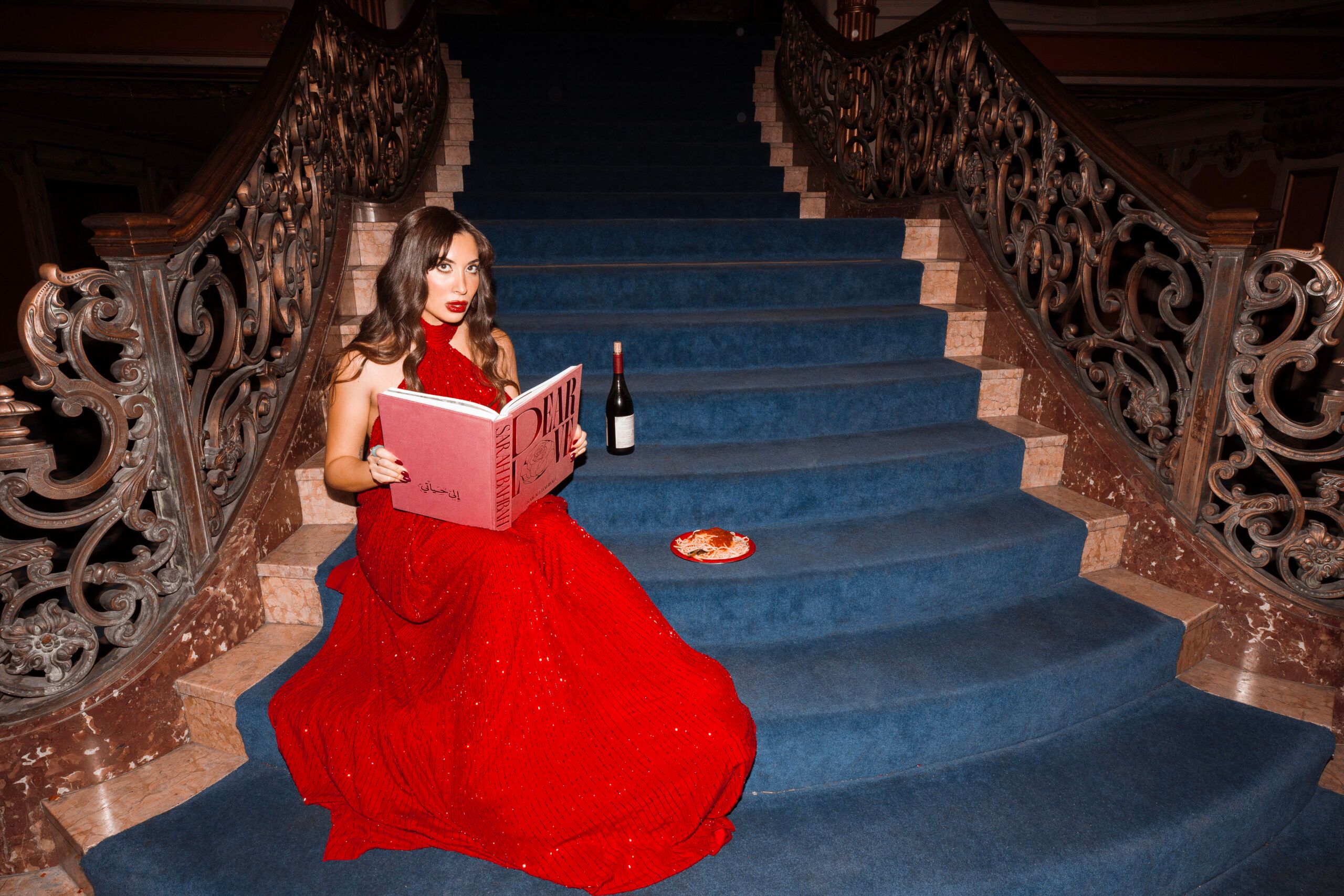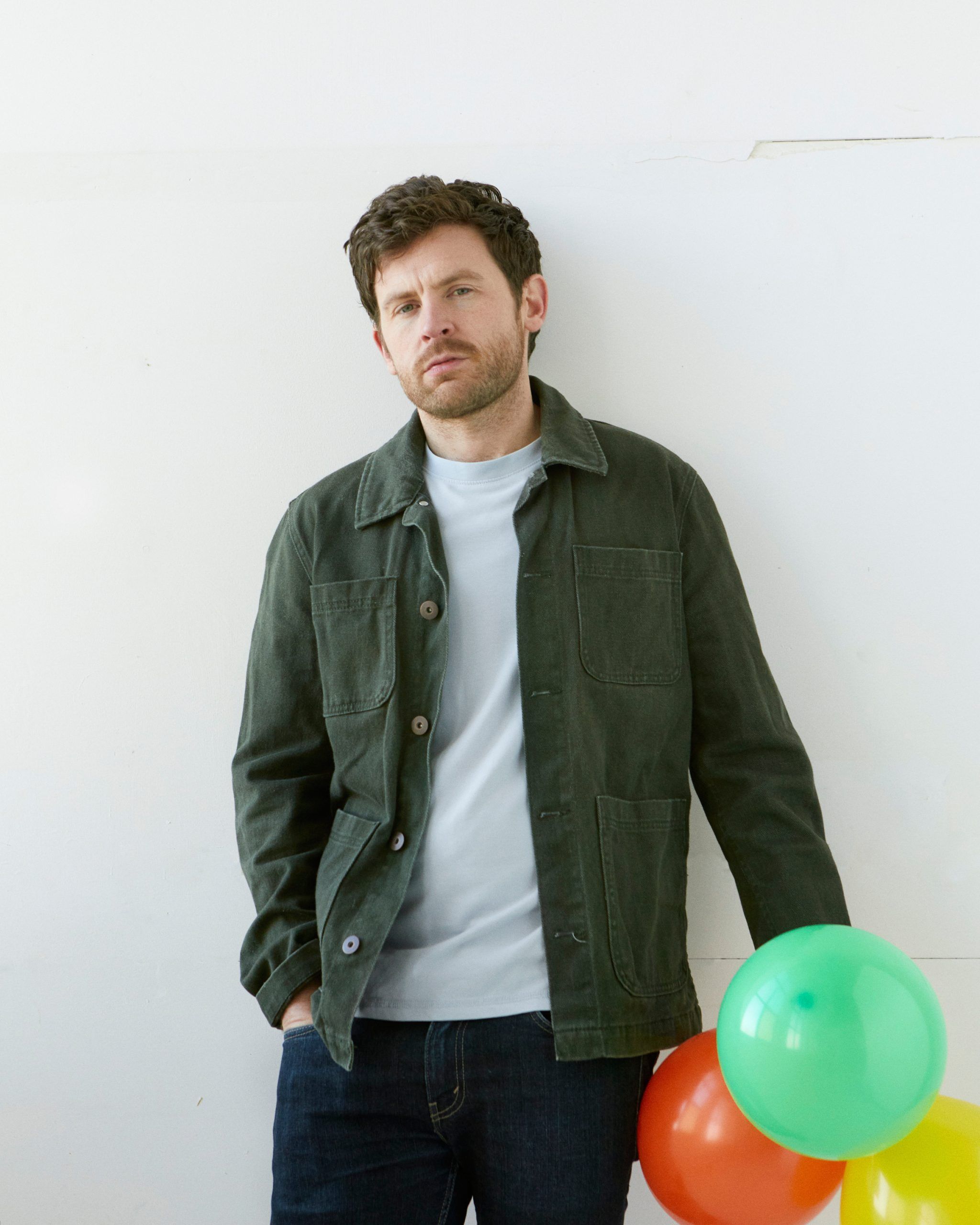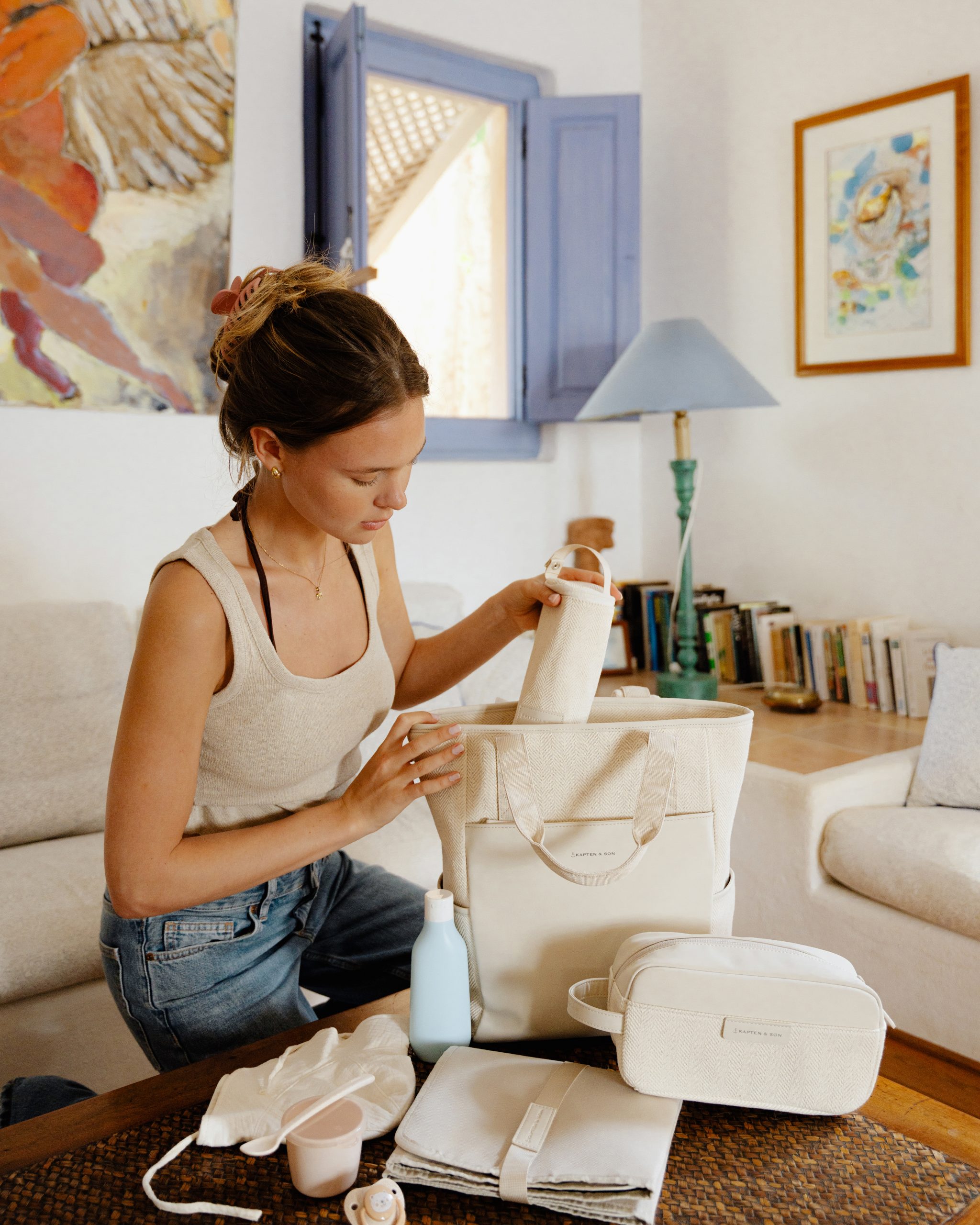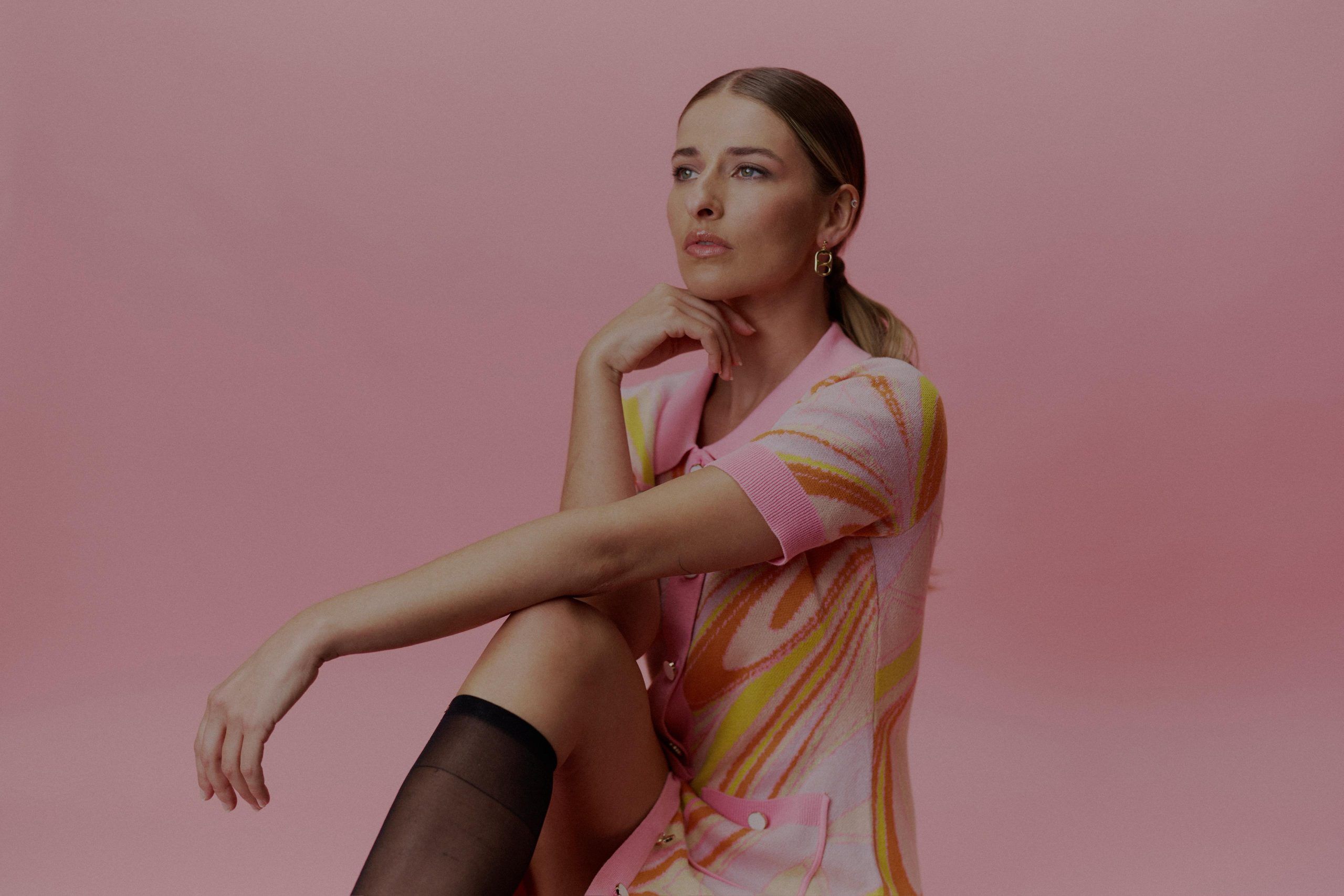Sarah Bahbah is a master at creating worlds. From her cinematic photography to her short films and now a book, she manages to create art that is somehow both fantastical and magical and gut-wrenchingly relatable.
Women lounging on a mattress in a Versaille-style lookalike room, eating pizza and wiping mascara tears away. Most of us haven’t cried so glamorously, but the emotions that Bahbah captures are universal. It’s why her work has maintained its popularity for the past decade she’s been publishing it. She makes people feel truly seen.
Everyone is longing for something. For acceptance, for love, for some beauty. The magical part in all of this to me, is how unflinching, even celebratory Bahbah’s works are. She takes her subject and gives them the space (and a stunning one at that) to dig through their pasts, their traumas, their sorrows – and then, when they’re on the other side, dressed in a flowy gown, they can finally appreciate just how beautiful it all was. To experience, to love, to break completely. And then, to find yourself once more. Often women are shamed for their joys – for liking sex (you’re a whore), for liking lipstick (you’re frivolous), for eating junk food (you’re not taking care of yourself). How sad that it is only in these fantastical worlds that women can finally find pleasure, can own their bodies, can direct the gaze, how lovely that Bahbah is creating these dreamscapes.
In conversation with 1883 Magazine, Sarah Bahbah discusses the process of putting together her book, Dear Love, what it was like to step in front of the camera and how she knew she had found her audience.
I wanted to start by first talking about your initial forays into art. What was your first artistic love?
I have a few. I would say that, because of the way that my brain processes my surroundings, my first love of art was creating environments within my home. That made me feel like I was escaping reality. So, an example of that was when I was five, we had one of those trampolines – one of the ones that aren’t in the ground, one that’s on legs – I wanted to use the bottom of the trampoline to create a treehouse for myself because my parents wouldn’t build me a treehouse. Then, inside it, I would put all these rugs that I found in the garage, and then I put all my posters around and I kind of created this little safe playground for me to enjoy. It was just mine – none of my siblings were allowed in. I liked taking places and turning them into playgrounds that were safe for the imagination. I think that was my first artistic expression.
That shines through in the work that you create – you create such detailed worlds. I know you were raised in a very culturally conservative household. That resonates with me because I was raised in a Catholic house and I went to a Catholic school. When I look at your work, it has all of these elements and motifs peppered throughout – things that women, historically haven’t been able to enjoy or have been publicly shamed for – shamed for having sex, shamed for eating junk food, shamed for the clothes that they wear and the makeup they put on their faces. Your work is a type of celebration of what people have considered being vices traditionally. What inspired you to create works that highlight women enjoying these things so thoroughly?
I also grew up in a Christian home. My childhood was Catholic, the rest of it was very Christian. With that comes a lot of restrictions and limitations on what a woman can do, and what a woman can do with her body and her sexuality. I needed to create a space where I was safe to express myself and my taboo thoughts. I wanted to feel free. I found freedom through artistic expression and creating these worlds where through other muses where I could tap into my innermost vulnerable thoughts and create a safe space for them to be out in the open without having to feel shame or guilt that I’m doing something wrong.
Up until 2020, I’d disguise myself through my muses. Then after 2020, I started putting myself in front of the camera. I was thought if my mom sees that she’s going to be so upset. I don’t know, up until this day, if she has seen it, you might have seen one, like 100 and that caused her not to speak to me for about two months.
But, I needed to find a way to come into my own without the limitations of the traditional Middle Eastern household. Then, also being able to claim and own my body as a brown woman, away from the Western space. I was always told I had to look a certain way to fit in. It was as simple as my peers saying things like, “Oh you’re so exotic. Where are you from?” I wanted to create a space where I belonged, a space that I could own.
So what changed for you, when you were no longer disguising yourself behind your muse? What was the moment that spurred you to kind of own that?
It was during the pandemic, actually, and my friend, Steven Bartlett, he’s an incredible human. He’s, like my life coach without being my life coach, I just learn so much from him, just by hearing him speak. I called and I was like, Steven, I’m struggling, I can see this world where I am fully in my body. I see myself owning it and walking into spaces and not being consumed by self-doubt. I have all these ideas to be in front of the camera and to push boundaries beyond anything that’s ever been done.
Steven had interviewed me for his podcast, Diary of a CEO, I think the year before, and he was like, “Sarah, of all the people I’ve ever interviewed, you are the one person that I know that doesn’t doubt their abilities. But, what you do doubt is the way you look. You need to go in and open Pandora’s box and see what’s up, you need that, because you wouldn’t even take a selfie with me without trying to control the angle.” He said, “It’s not that you don’t believe in yourself. It’s that you don’t believe in how you look.”
So I went to the desert. I stayed in this little creative space for a couple of months, like, literally peak pandemic. I was like, alright, let’s go in and unlock all of this shit that I’ve been holding on to – all these beliefs about myself that were affirmed at such a young age. How I was one of the only brown girls at my school and was tormented by my peers for the way that I looked. I didn’t realize that that had stuck with me as an adult. So, after all that soul-searching I was ready to step in front of the camera. That’s how that happened.
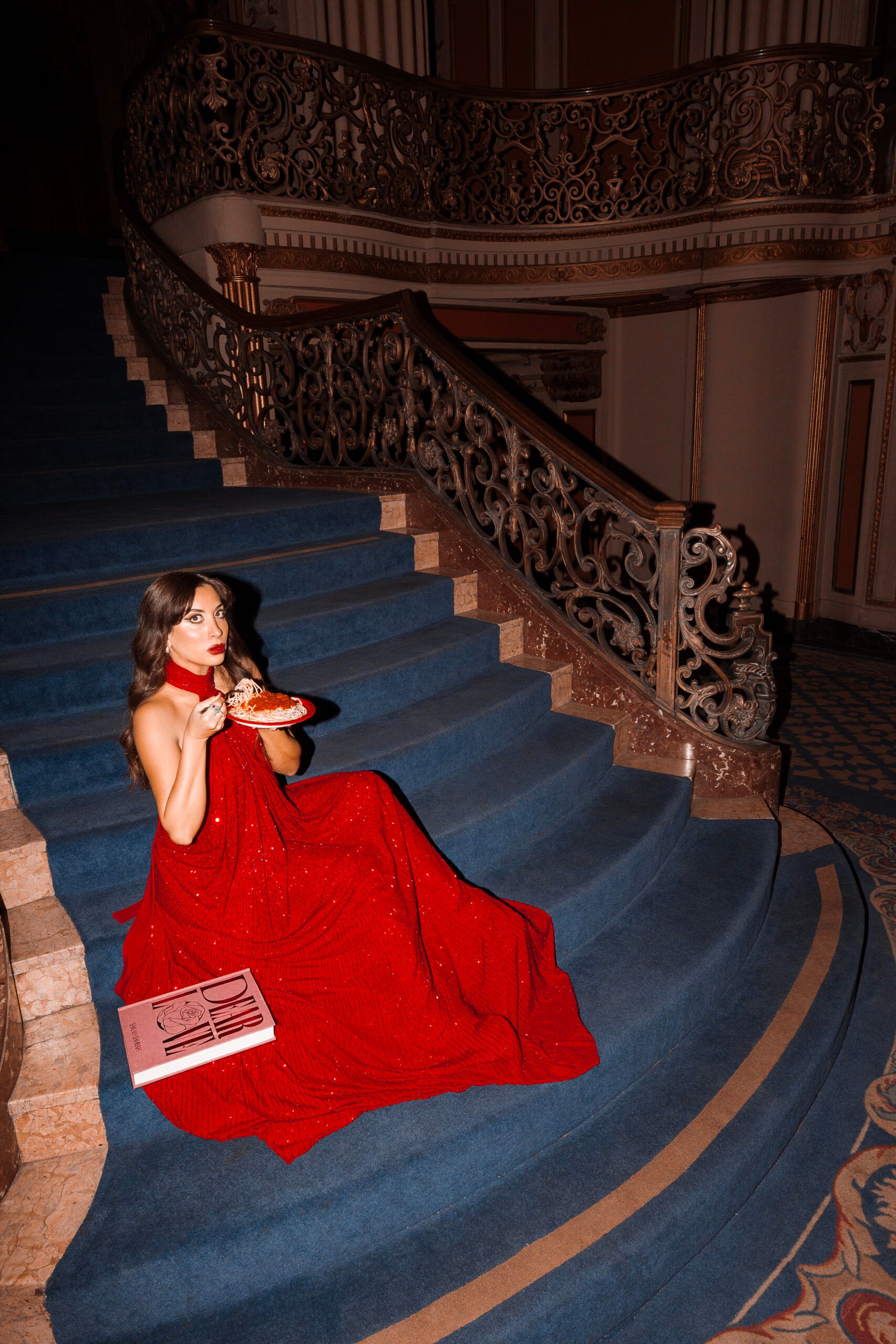
What kind of media has been one of the major inspirations for the work that you create?
So, I’ll be honest, for the very early days of my career, I didn’t study photographers, I didn’t study films, I didn’t, it wasn’t really in my well. From an early age, it was my intuitive process to create these playgrounds in my brain. I also dream every single night, and I have very, very visually detailed dreams. Dreams that pull from the things that you consume in your day-to-day. So, I’d create these crazy worlds I saw in my head. It was always so fascinating to me to write my dreams down, and then to try and articulate them through my art. That’s where my inspiration came from. It was from my dream space.
Then, with Tumblr, I started saving all the film screenshots with the subtitles. Eventually, I was like, I’m a photographer – I wanna do this. I wanted to be able to tell my story in this way. So I decided to go to the Instagram platform and share stills that looked like they came from a film. Like the stuff, I’d been saving on Tumblr. I was like – ok I’m gonna do a photoshoot and trick people into thinking they’re seeing stills from a movie, but they’re just photos. I’ll put my inner dialogue on them. I’m gonna release it every day. I’m gonna see what happens. That decision to adapt something that was working so well on Tumblr, but then to make it my own by owning these photography narratives that weren’t film helped me set up my signature style, and it also set me up for my art for the seven years since I started doing that.
Your style is so uniquely yours. I feel like I could see a piece of your art and I would just know it was yours without anyone telling me. Was this style of curation a conscious effort or kind of a happy byproduct of your work?
It was. I want to say that my background is in advertising and the department that I was in was social media I was growing all these accounts when Facebook was still new for small businesses and big businesses and Instagram hadn’t even started brand pages yet. I was heavily studying what new brands were doing as they were entering the Instagram space. But I was also existing as an artist who was documenting musicians and I had so many different worlds going on that led me to this moment, but I do believe, because my world was consumed in consumer behaviour and how I had to tap into certain demographics and psychographics I ended up subconsciously being influenced by what I was doing in my advertising life, and it leaked into my art. I was able to strategize in such a way, that I broke through the platform in a new way. I was one of the innovators for instagram to use the platform and showcase a story that hadn’t been done before. It was part creative, part business. It was strategy, but it was also my art and my story.
When did you start to realize that your work and this creative strategy was resonating with people, and it was starting to get some momentum?
When I was releasing the work, everyone was just like, “Oh, my God, this is so cool. Where can I watch this? Is this a movie?”, “I feel so seen!”, “Wow! It’s like you’re in my head” That was the feedback I was getting. In 2016, I released another one. It went so viral. It was being shared left, right and center. Then ,Gucci did a campaign where they put the same kind of subtitles on their photos, and everyone was commenting on their pictures like, “Oh, my God, you stole this idea from Sarah.” It was very intense. I was like, damn, I must be making an impact if Gucci is trying to rip off the style that I’ve cemented into Instagram.
Then it just kept happening, all these brands kept doing it. I was thought, okay, you know, you’ve done something, right if everyone else is doing what you’re doing. That’s kind of how I knew from a commercial standpoint that I had created something within pop culture that like spread to l that calibre. Then, on an emotional level, it was honestly the people who followed that solidified the fact that I was onto something really special. It pushed me to keep going. It pushed me to keep doing work on myself. So I could process a lot of my trauma and my grief, and give it to the world once I had fully realized the things that I was experiencing.
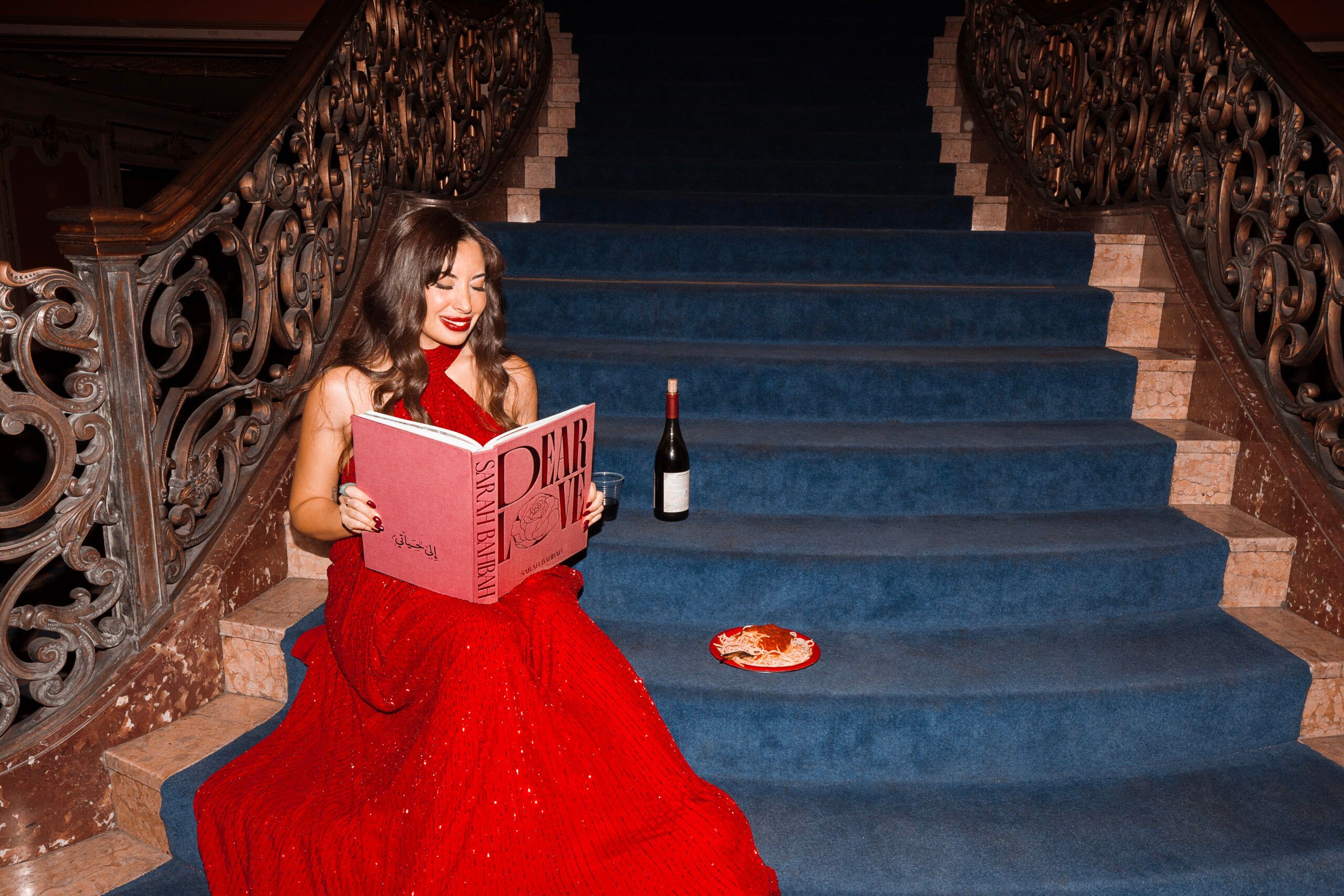
It’s difficult to be honest, authentic and vulnerable. I know that from experience and the things that I write, how do you combat those feelings of “Oh my god, I am sharing everything about myself in my art. I am fully exposed.” It’s really scary. How do you deal with that?
I think if you prioritize the intention behind the work and ask yourself why you’re doing it, ask how it will help you grow, and how’s this going to help you release, then it becomes a no-brainer. If you intend to go in and harness all of the emotions that we tend to neglect, and pull that onto paper or pull that into photography or writing or whatever it is and then seeing it in front of you – that’s already the biggest step.
For me, it takes months to process what I’m experiencing, so it’s not something that I just immediately does. I sit with my words for a really long time. It’s usually because I’m, you know, grieving a relationship or trying to process something that happened to me when I was a kid. Once I know that I fully processed it and accepted the state that I was in, and I see healing and moving forward, then I’m like, how can I release this into the world. It’s just about being gentle with yourself and not letting the critical, judgmental voice in your head dictate your emotions, or how you release them. Because ultimately, that voice does make you feel some kind of shame or guilt. If you can notice it without letting it consume you, and just stay on the right path of being authentic to your story, being authentic to your emotions, and then letting it go. Then it’s no longer difficult.
You also have just released a book, which is so beautiful. What was the process of creating that like?
Dear Love was actually one of the hardest processes I’ve been through. It was me collecting 10 years of work. With that process alone, I had to go through every single photo I’ve ever taken. I had to re-edit everything and reformat everything and shortlist. It was just infinite days sitting behind my laptop, just doing something really mundane. Then there was the emotional side of it which is the writing portion – this is my memoir and my autobiography for the past 30 years of my life. That was very challenging to work on, because I had to tap into memories that I hadn’t really processed before. I felt like I was reliving my trauma every day and also dealing with impostor syndrome. Like, who am I to be writing an autobiography at 30 years old? But then also realizing I have experienced an immense amount of living and feeling and trauma and heartbreaks. I know I got put through this process to be able to tell my story eventually. I decided to put this book together to celebrate my 20s. So, yeah, that’s kind of how it went.
But then also on a logistical side to go through the process of figuring out the materials to editing to legal to organizing your team. I was also project manager – so anyone who contributed to the book I was speaking to every single day. That went on for an entire year. It was nonstop. By the end of it, I was burnt out and exhausted. I only started resting, I guess, two and a half weeks ago.
Now, you can finally sit back and relax. The book is out there and it’s getting such great reviews. Everyone is so moved by its content. I just think that’s a testament to the art that you’ve created for the past decade-plus of work that you’ve been publishing. I’m really excited to see everything that you’ve done so far and everything that’s coming your way in the future.
Thank you!
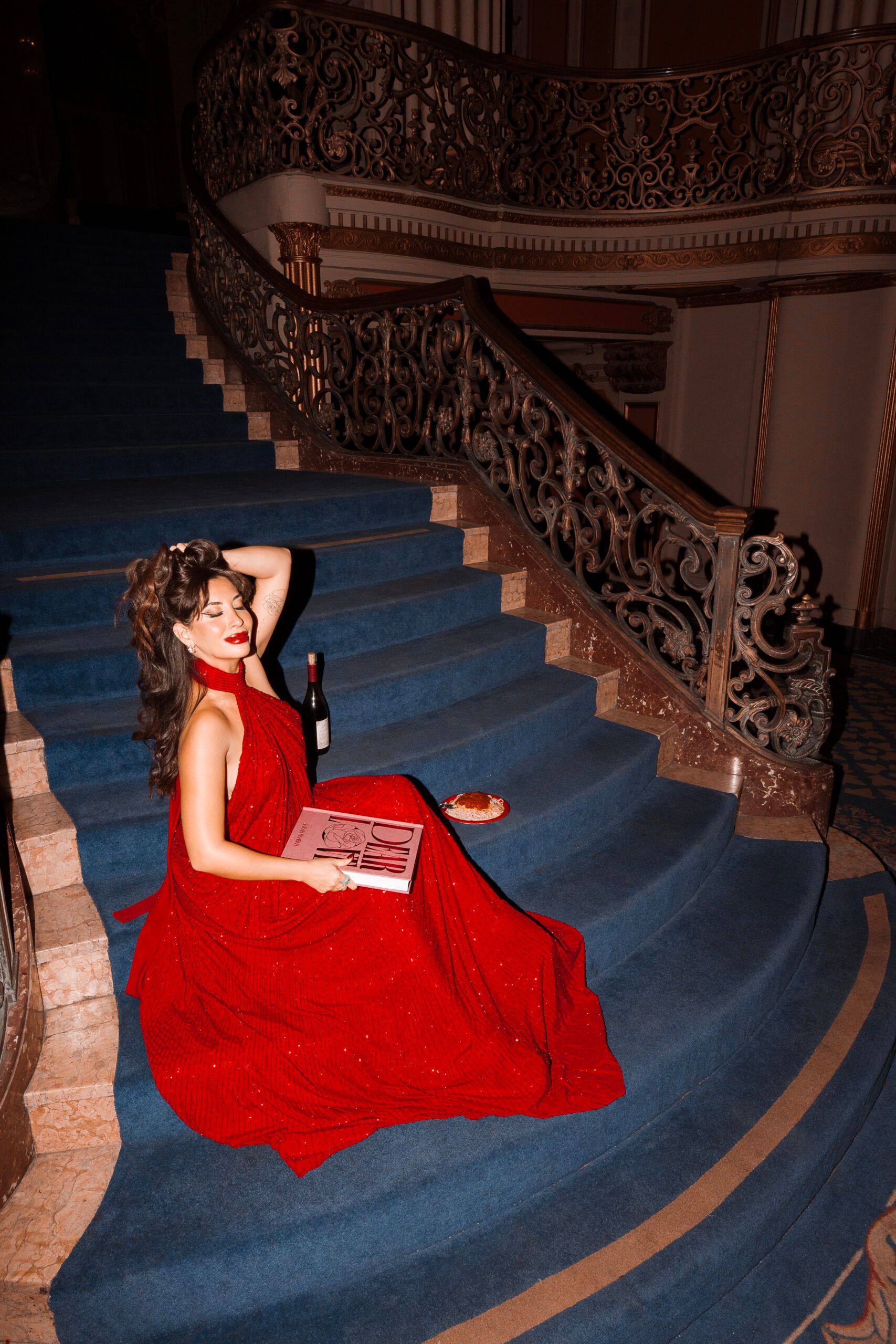
Dear Love is out now.
Interview Kendall Saretsky

